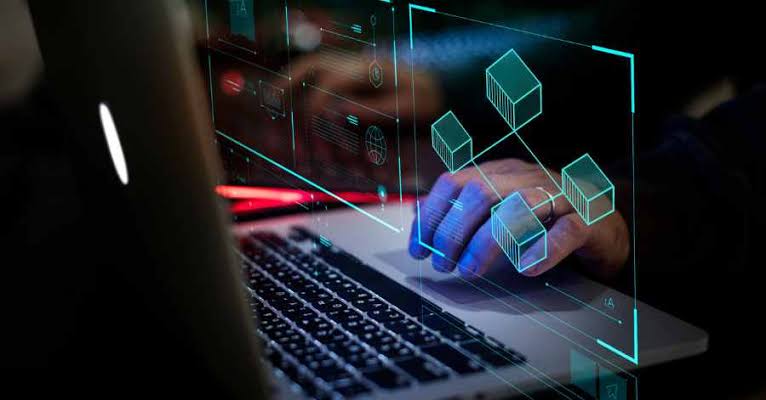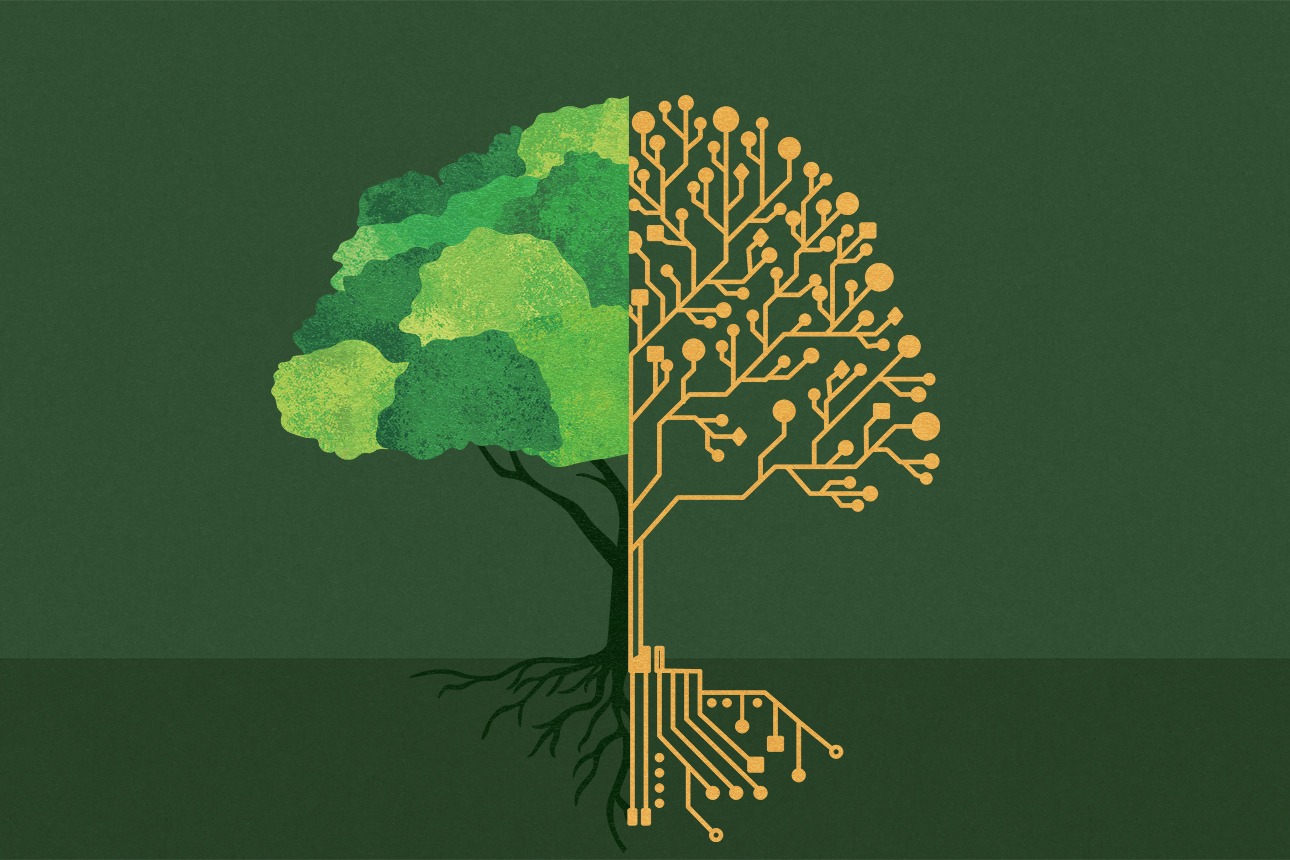
Blockchain for Secure Academic Records and Certifications
Blockchain technology offers a secure and transparent way to manage academic records and certifications by ensuring data integrity and preventing fraud. It allows instant verification of credentials, empowering students with control over their educational documents. Educational institutions benefit from simplified record management and enhanced trust in their issued certifications.
✨ Raghav Jain

Introduction
In today’s digital world, the security and authenticity of academic records and certifications have become a critical concern. Traditional paper-based certificates are prone to loss, damage, forgery, and fraud. Even digital certificates, stored on centralized servers, face risks such as hacking, data tampering, and unauthorized access. As education becomes more global and decentralized, verifying credentials quickly and reliably is increasingly important for students, employers, and educational institutions alike.
This is where blockchain technology steps in as a revolutionary solution. Known primarily as the backbone technology of cryptocurrencies like Bitcoin, blockchain offers unique properties of decentralization, immutability, transparency, and security. These features make it an ideal tool to store, manage, and verify academic records and certifications in a trustworthy manner.
This article explores how blockchain can transform academic record-keeping, the benefits it brings, challenges faced, and future prospects for education systems worldwide. The digital transformation of academic records and certifications, while offering unparalleled convenience and accessibility, has simultaneously introduced critical vulnerabilities pertaining to security, authenticity, and immutability. Traditional systems for storing and verifying academic credentials, often reliant on centralized databases and paper-based documents, are inherently susceptible to fraud, manipulation, and cumbersome verification processes, thereby eroding trust in the very validity of educational achievements. This pervasive challenge has catalyzed the exploration of blockchain technology as a revolutionary solution, offering a decentralized, transparent, and immutable ledger system ideally suited to safeguard the integrity of academic records and certifications from creation to verification. At its core, blockchain, a distributed ledger technology (DLT), operates by creating a chain of interconnected blocks, each containing a batch of timestamped transactions. Once a block is added to the chain, it is cryptographically linked to the previous block, making any subsequent alteration virtually impossible without compromising the entire chain. This inherent immutability and tamper-proof nature are precisely what position blockchain as a game-changer for academic institutions and their stakeholders, promising to usher in an era of unprecedented trust, efficiency, and security in the management and verification of educational credentials.
The application of blockchain in academic record management fundamentally reimagines the entire lifecycle of a student's educational journey, from enrollment to graduation and beyond. When a student completes a course, earns a degree, or achieves a specific certification, this accomplishment, instead of being merely recorded in a centralized university database, is securely transcribed onto a blockchain. Each record—whether it's a course grade, a diploma, a transcript, or a professional certification—is converted into a unique digital hash, a cryptographic fingerprint, and then embedded within a block on the distributed ledger. This process ensures that the record is not only immutably stored but also linked to the student's unique digital identity, often represented by a cryptographic key pair. The student effectively becomes the owner of their verifiable digital credentials, holding the private key that grants them access and control over their academic portfolio. This paradigm shift from institutional custody to individual ownership empowers learners with unprecedented control over their educational data, enabling them to share their verified credentials securely and selectively with potential employers, other educational institutions, or licensing bodies without relying on a third-party intermediary for verification. This peer-to-peer verification process significantly reduces the time, cost, and administrative burden traditionally associated with transcript requests and degree confirmations, streamlining bureaucratic hurdles and enhancing efficiency for all parties involved.
The benefits of blockchain-based academic record systems extend far beyond enhanced security and streamlined verification. The inherent transparency of the public or permissioned blockchain allows for instantaneous and irrefutable validation of credentials by authorized parties. For instance, an employer considering a job applicant can, with the applicant's permission, directly verify the authenticity of their degree or certifications on the blockchain, eliminating the need to contact the issuing institution or rely on potentially fraudulent paper certificates. This drastically mitigates the pervasive issue of credential fraud, which costs industries and institutions significant resources and undermines confidence in qualifications. Furthermore, the decentralized nature of blockchain eliminates single points of failure. Unlike centralized databases that are vulnerable to cyberattacks, data breaches, or natural disasters, a blockchain network is distributed across multiple nodes, ensuring that even if some nodes fail, the integrity and availability of the records remain intact. This resilience provides an unprecedented level of data security and disaster recovery capabilities. The global accessibility of blockchain also facilitates international credential recognition, breaking down geographical barriers and simplifying the transfer of academic achievements across borders. A university in one country can instantly verify the authenticity of a student's transcript from an institution halfway across the world, fostering greater academic mobility and collaboration.
Moreover, blockchain technology can enhance the granularity and specificity of academic records. Instead of just issuing a broad degree, institutions can issue "micro-credentials" or "digital badges" for specific skills acquired, projects completed, or competencies demonstrated. Each of these smaller achievements can be recorded as a separate entry on the blockchain, creating a more comprehensive and nuanced digital portfolio of a student's learning journey. This granular approach provides a richer, more detailed, and verifiable representation of an individual's abilities, aligning better with the evolving demands of the modern workforce which increasingly values specific skills over generic qualifications. The timestamping feature inherent in blockchain further ensures the chronological integrity of these records, providing an undeniable audit trail of when each achievement was earned. This level of detail and verifiable proof of continuous learning is invaluable in rapidly changing industries where lifelong learning and skill adaptation are paramount. Institutions can also leverage blockchain for internal record-keeping, ensuring the integrity of student enrollment data, course completion rates, and faculty qualifications, thereby enhancing internal auditing processes and regulatory compliance. The potential for smart contracts, self-executing contracts with the terms of the agreement directly written into code, can further automate and secure processes such as certificate issuance upon meeting specific criteria, or even managing alumni network access based on verified graduation status.
Despite its transformative potential, the widespread adoption of blockchain for academic records faces several significant challenges. Scalability is a key concern; managing the academic records of millions of students globally requires robust blockchain networks capable of handling a vast number of transactions efficiently and without exorbitant costs. Interoperability between different blockchain platforms and existing legacy systems within academic institutions is another hurdle, necessitating the development of standardized protocols and seamless integration solutions. Regulatory frameworks and legal recognition of blockchain-based credentials vary across jurisdictions, requiring concerted efforts to establish universal acceptance and legal validity. Data privacy, especially concerning personally identifiable information (PII) of students, must be meticulously addressed, often through the use of privacy-preserving techniques like zero-knowledge proofs or by storing only cryptographic hashes of sensitive data on the public ledger while the actual data resides off-chain in encrypted formats, accessible only with explicit user consent. User education and adoption are also crucial; students, faculty, administrators, and employers need to understand the benefits and functionality of blockchain-based systems to fully embrace their potential. The initial investment in developing and implementing such systems can also be substantial, requiring significant resources and a long-term strategic vision from educational institutions. Furthermore, ensuring the long-term archival and accessibility of these digital credentials, particularly for future generations, necessitates careful consideration of storage solutions and cryptographic key management.
In conclusion, blockchain technology offers a compelling and fundamentally secure solution to the inherent vulnerabilities of traditional academic record management and certification systems. By providing an immutable, transparent, and decentralized ledger, blockchain empowers individuals with verifiable ownership of their educational achievements, drastically reduces fraud, streamlines verification processes, and enhances trust across the academic ecosystem. While challenges related to scalability, interoperability, regulatory acceptance, and data privacy must be diligently addressed, the inherent advantages of blockchain – unparalleled security, global accessibility, reduced administrative burden, and the potential for granular credentialing – position it as a revolutionary force poised to redefine the future of academic record-keeping. As pilot projects proliferate and standardization efforts gain momentum, the vision of a world where academic credentials are instantly verifiable, globally recognized, and entirely secure, thereby restoring confidence in the true value of education, moves steadily from a theoretical ideal to a tangible reality. The shift towards blockchain-powered academic records is not merely an technological upgrade; it represents a fundamental re-architecture of trust and efficiency in the digital age of learning.
What is Blockchain Technology?
Blockchain is a distributed ledger technology that records transactions across many computers in such a way that the registered data cannot be altered retroactively without the consensus of the network. Each transaction or record is bundled into a "block," and blocks are linked together in a "chain."
Key features include:
- Decentralization: No single authority controls the data.
- Immutability: Once recorded, data cannot be changed.
- Transparency: All participants can view transactions.
- Security: Data is cryptographically secured.
By leveraging these features, blockchain creates a secure and transparent environment, perfect for sensitive information like academic credentials.
Why Use Blockchain for Academic Records and Certifications?
Traditional academic records often face several challenges:
- Forgery and Fraud: Fake degrees and transcripts can easily be created.
- Inefficiency: Verifying academic credentials takes time, especially for international students.
- Loss and Damage: Physical certificates can be lost, damaged, or destroyed.
- Centralized Control: Universities and institutions control access to records, limiting flexibility and transparency.
Blockchain can address these issues by providing a tamper-proof, easily accessible, and universally verifiable system for academic records.
How Blockchain Works for Academic Credentials
1. Issuance
When a student completes a course or graduates, the institution creates a digital certificate. This certificate is hashed (converted into a unique digital fingerprint) and recorded on the blockchain as a transaction. The actual certificate file can be stored securely off-chain, while its hash on-chain guarantees authenticity.
2. Storage
Because blockchain is decentralized, no single entity stores all the data. Copies of the blockchain exist across multiple nodes globally, ensuring data redundancy and protection from tampering.
3. Verification
Employers, institutions, or any third party can verify the authenticity of a certificate by checking the hash stored on the blockchain against the provided digital certificate. This process is instant and does not require contacting the issuing institution.
4. Access
Students can control access to their records by sharing secure digital keys or links, allowing them to manage their credentials independently.
Benefits of Blockchain in Academic Records
1. Enhanced Security
Blockchain’s cryptographic techniques ensure that academic credentials cannot be altered or forged once entered into the ledger.
2. Increased Transparency
Because the ledger is public (or permissioned for privacy), stakeholders can easily verify the legitimacy of certificates.
3. Efficiency and Speed
Instant verification saves time for employers and institutions, eliminating the need for lengthy manual checks.
4. Student Empowerment
Students gain control over their academic records, enabling easy sharing without dependency on institutions.
5. Reduced Administrative Costs
Automating record-keeping and verification reduces the need for intermediaries and administrative overhead.
6. Global Recognition
Blockchain-based credentials facilitate international recognition, breaking down barriers for student mobility and employment.
Real-World Applications and Examples
1. MIT Media Lab’s Digital Diploma
MIT began issuing digital diplomas via blockchain, allowing graduates to receive secure, verifiable certificates accessible online.
2. Holberton School
This coding school uses blockchain to certify student achievements, enabling employers to instantly verify skills without needing paper transcripts.
3. Sony Global Education
Sony developed a blockchain platform that stores academic records from multiple institutions, aiming for a global, interoperable credential system.
Challenges and Limitations
Despite its promise, blockchain adoption in education faces challenges:
1. Privacy Concerns
Storing personal information on a public or semi-public blockchain raises privacy and data protection issues. Solutions like permissioned blockchains or storing only hashes can mitigate this.
2. Standardization
Lack of universal standards for digital credentials complicates interoperability between institutions and platforms.
3. Technical Complexity
Implementing blockchain solutions requires expertise and infrastructure that many educational institutions may lack.
4. Legal and Regulatory Issues
The legal validity of blockchain credentials varies across countries and jurisdictions, requiring clear frameworks and recognition.
5. Resistance to Change
Institutions and stakeholders accustomed to traditional systems may be hesitant to adopt new technologies.
The Future of Blockchain in Academic Credentialing
The future looks bright for blockchain-powered academic records, driven by increasing digital transformation in education. Emerging trends include:
- Integration with Learning Management Systems (LMS): Seamless issuance and tracking of certificates as students complete online courses.
- Decentralized Identifiers (DIDs): Giving students self-sovereign identity to manage all their credentials in one place.
- Micro-credentialing: Smaller, skill-based certifications stored on blockchain for continuous learning and upskilling.
- Global Credential Networks: Cross-border collaboration to create a universally recognized academic record system.
Governments, universities, and tech companies are investing heavily in pilot programs and research to scale blockchain in education, ensuring a future where academic fraud is minimized and verification is effortless.
Conclusion
Blockchain technology holds transformative potential to make academic records and certifications more secure, transparent, and efficient. By decentralizing control and leveraging cryptography, blockchain can prevent fraud, empower students, and streamline verification for institutions and employers globally.
While challenges like privacy, standardization, and adoption remain, ongoing innovation and collaboration across sectors will pave the way for blockchain to become the trusted backbone of academic credentialing.
In a world where credibility and trust are paramount, blockchain offers a path forward—a future where academic achievements are protected and universally recognized, benefiting students, educators, and society as a whole.
Q&A Section
Q1: What is blockchain technology and how does it work?
Ans: Blockchain is a decentralized digital ledger that records transactions in a secure, transparent, and immutable way, using cryptographic techniques to ensure data integrity.
Q2: Why is blockchain considered ideal for securing academic records?
Ans: Blockchain’s decentralized nature prevents unauthorized changes, making academic records tamper-proof, easily verifiable, and resistant to fraud or forgery.
Q3: How can blockchain improve the verification process of academic certificates?
Ans: Blockchain allows instant, secure verification of certificates without needing intermediaries, reducing the time and cost for institutions and employers to confirm credentials.
Q4: What benefits does blockchain offer to students regarding their academic records?
Ans: Students gain control over their records, can share them securely with institutions or employers, and benefit from permanent, accessible records that cannot be lost or altered.
Q5: How does blockchain help educational institutions in managing certifications?
Ans: Institutions can issue certificates on the blockchain, simplifying record management, preventing duplication, and enhancing trust in the authenticity of their credentials.
Q6: What role does blockchain play in preventing academic fraud?
Ans: Blockchain’s immutable ledger makes it extremely difficult to forge or alter academic records, thus significantly reducing instances of fake degrees or certifications.
Q7: Can blockchain support lifelong learning and continuous education tracking?
Ans: Yes, blockchain can maintain a comprehensive and secure record of all certifications and courses completed over a lifetime, supporting lifelong learning and skills recognition.
Q8: What challenges exist in adopting blockchain for academic records?
Ans: Challenges include technical complexity, lack of standardization across institutions, privacy concerns, and the need for widespread acceptance and integration.
Q9: Are there any existing examples of blockchain use in academia?
Ans: Yes, some universities and platforms like MIT and Sony Global Education have started using blockchain to issue and verify digital diplomas and certificates.
Q10: How can blockchain impact the future of education administration?
Ans: Blockchain can streamline administrative processes, enhance data security, enable seamless record sharing, and build greater trust among students, employers, and institutions.
Similar Articles
Find more relatable content in similar Articles

3D-Printed Organs: Are We Clos..
3D-printed organs are at the f.. Read More

Virtual Reality Therapy: Heali..
Virtual Reality Therapy (VRT) .. Read More

The Hidden Energy Cost of Stre..
As digital streaming and onlin.. Read More

The Rise of Digital Twins: You..
Digital twins are transforming.. Read More
Explore Other Categories
Explore many different categories of articles ranging from Gadgets to Security
Smart Devices, Gear & Innovations
Discover in-depth reviews, hands-on experiences, and expert insights on the newest gadgets—from smartphones to smartwatches, headphones, wearables, and everything in between. Stay ahead with the latest in tech gear
Apps That Power Your World
Explore essential mobile and desktop applications across all platforms. From productivity boosters to creative tools, we cover updates, recommendations, and how-tos to make your digital life easier and more efficient.
Tomorrow's Technology, Today's Insights
Dive into the world of emerging technologies, AI breakthroughs, space tech, robotics, and innovations shaping the future. Stay informed on what's next in the evolution of science and technology.
Protecting You in a Digital Age
Learn how to secure your data, protect your privacy, and understand the latest in online threats. We break down complex cybersecurity topics into practical advice for everyday users and professionals alike.
© 2025 Copyrights by rTechnology. All Rights Reserved.